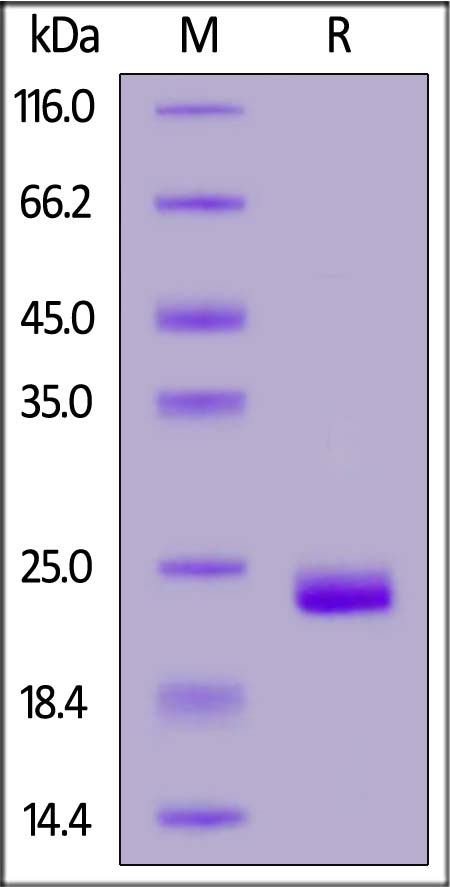Structure-Guided Development of Chemically Tailored Peptide Binders of RNF43/ZNRF3 to Enable Versatile Design of Membrane Protein-Targeting PROTACsCui, Zheng, Weng
et alAngew Chem Int Ed Engl (2025)
Abstract: Targeted membrane protein degradation using cell surface E3 ligases RNF43/ZNRF3 via proteolysis targeting chimeras (PROTACs) represents an effective strategy for treating membrane drug targets that cannot be fully inhibited using traditional inhibitors. Several ingenious chimeras have been developed to tether RNF43/ZNRF3 to target membrane proteins, resulting in the degradation of targets at sub-nanomolar concentrations both in vitro and in vivo. However, currently available RNF43/ZNRF3 binders are genetically encoded and have poor plasticity, which limits the design and promotion of such PROTACs. Here, we exploited the AlphaFold-predicted complex structures of ligand-bound RNF43/ZNRF3 and developed a class of chemically tailored peptide binders for ZNRF3/RNF43. With these peptide binders that can be conveniently prepared by de novo peptide synthesis, we established a new membrane protein degradation platform that allows versatile modular design and targeted degradation of clinically relevant membrane proteins, i.e., PD-L1 and EGFR. This study presents a new subtype within the PROTAC field to develop therapeutic peptides targeting membrane proteins.© 2025 Wiley‐VCH GmbH.
A Comparative Study on the Progression of Neuroendocrine Carcinomas and Mixed Neuroendocrine-Non-Neuroendocrine NeoplasmsDuan, Zhao, Yin
et alOncology (2025)
Abstract: The prognostic differences between neuroendocrine carcinoma (NEC) and mixed neuroendocrine-non-neuroendocrine neoplasm (MiNEN) remain unclear.This study aimed to compare the prognostic outcomes of NEC and MiNEN by analyzing the clinicopathological features of these diseases and exploring factors affecting progression after radical surgery. Additionally, we employed whole-exome sequencing to investigate the molecular mechanisms influencing the prognosis of both conditions.Among the 252 patients followed, 163 underwent surgical treatment. The median time to tumor progression was 16 months (range: 9-56 months). Tumor pathology type (p = 0.007), lymph node metastasis (p < 0.0001), and distant metastasis (p < 0.0001) were identified as independent factors affecting disease progression in NEC and MiNEN patients. MiNEN patients without lymph node or distant metastasis generally had a better prognosis. First-line chemotherapy regimens did not show a significant impact on disease progression (p = 0.160, median progression-free survival [mPFS]: 36 vs. 13 vs. 23 vs. 15 months). However, the etoposide plus cisplatin (EP) regimen has shown good efficacy in gastric neuroendocrine neoplasms (NENs) (p = 0.048, mPFS: 45 vs. 12 vs. 32 vs. 16 months), especially in gastric MiNENs (p = 0.022, mPFS: Undefined vs. 11 vs. 52 vs. 37 months). Further investigation into the genetic mutation differences between NECs and MiNENs revealed that among previously sequenced data, rectal NECs commonly exhibited mutations in MUC16, SPTA1, ATM, PDGFB, NF1, FAT4, AR, APC, ANTXR2, and ADGRA2. In contrast, rectal MiNENs showed common mutations in NOTCH2, ZNRF3, CARD11, TP53, OBSCN, FPR1, APC, ANGPT2, ARID1A, and AR. Mutations in ANGPT2 and OBSCN were present in two rectal MiNEN cases, while NF1 and PDGFB mutations were found in two rectal NEC cases but not in MiNENs. The JAK-STAT signaling pathway appears to be specific to rectal NECs and may be involved in tumor progression.EP regimen remains the most effective chemotherapy option for neuroendocrine tumor patients. There were prognostic differences between NECs and MiNENs, as well as differences in genetic mutations and signaling pathways. This study provided new insights into the prognosis assessment and treatment strategies for NENs, particularly highlighting the importance of personalized treatments and the development of novel targeted therapies.© 2025 S. Karger AG, Basel.
2-Cyanopyrimidine-Containing Molecules for N-Terminal Selective Cyclization of Phage-Displayed PeptidesHampton, Dobie, Coleman
et alACS Chem Biol (2025) 20 (1), 219-228
Abstract: Current methods for the macrocyclization of phage-displayed peptides often rely on small molecule linkers that nonspecifically react with targeted amino acid residues. To expand tool kits for more regioselective macrocyclization of phage-displayed peptides, this study explores the unique condensation reaction between an N-terminal cysteine and nitrile along with the reactivity of an internal cysteine. Five 2-cyanopyrimidine derivatives were synthesized for this purpose and evaluated for their selective macrocyclization of a protein-fused model peptide. Among these, two novel linkers, 2-chloro-N-(2-cyanopyrimidin-5-yl)acetamide (pCAmCP) and 2-chloro-N-(2-cyanopyrimidin-4-yl)acetamide (mCAmCP), emerged as efficient molecules and were demonstrated to macrocyclize phage-displayed peptide libraries flanked by an N-terminal and an internal cysteine. Using these linkers to generate macrocyclic peptide libraries displayed on phages, peptide ligands for the ZNRF3 extracellular domain were successfully identified. One of the identified peptides, Z27S1, exhibited potent binding to ZNRF3 with a KD value of 360 nM. Notably, the selection results revealed distinct peptide enrichment patterns depending on whether mCAmCP or pCAmCP was used, underscoring the significant impact of linker choice on macrocyclic peptide identification. Overall, this study validates the development of two novel regioselective, small molecule linkers for phage display of macrocyclic peptides and highlights the benefits of employing multiple linkers during phage selections.
Structural insights into the LGR4-RSPO2-ZNRF3 complexes regulating WNT/β-catenin signalingWang, Hu, Cui
et alNat Commun (2025) 16 (1), 362
Abstract: WNT/β-catenin signaling plays key roles in development and cancer1,2. ZNRF3/RNF43 modulates Frizzleds through ubiquitination, dampening WNT/β-catenin signaling. Conversely, RSPO1-4 binding to LGR4-6 and ZNRF3/RNF43 enhances WNT/β-catenin signaling3-5. Here, we elucidate the overall landscape of architectures in multiple LGR4, RSPO2, and ZNRF3 assemblies, showcasing varying stoichiometries and arrangements. These structures reveal that LGR4 and RSPO2 capture distinct states of ZNRF3. The intrinsic heterogeneity of the LGR4-RSPO2-ZNRF3 assembly is influenced by LGR4 content. Particularly, in the assembly complex with a 2:2:2 ratio, two LGR4 protomers induce and stabilize the inactive state of ZNRF3, characterized by a wide inward-open conformation of two transmembrane helices (TM helices). This specific assembly promotes a stable complex, facilitating LGR4-induced endocytosis of ZNRF3. In contrast, the active dimeric ZNRF3, bound by a single LGR4, adopts a coiled-coil TM helices conformation and dimerization of RING domains. Our findings unveil how LGR4 content mediates diverse assemblies, leading to conformational rearrangements in ZNRF3 to regulate WNT/β-catenin signaling, and provide a structural foundation for drug development targeting Wnt-driven cancers.© 2025. The Author(s).




























































 膜杰作
膜杰作 Star Staining
Star Staining

















